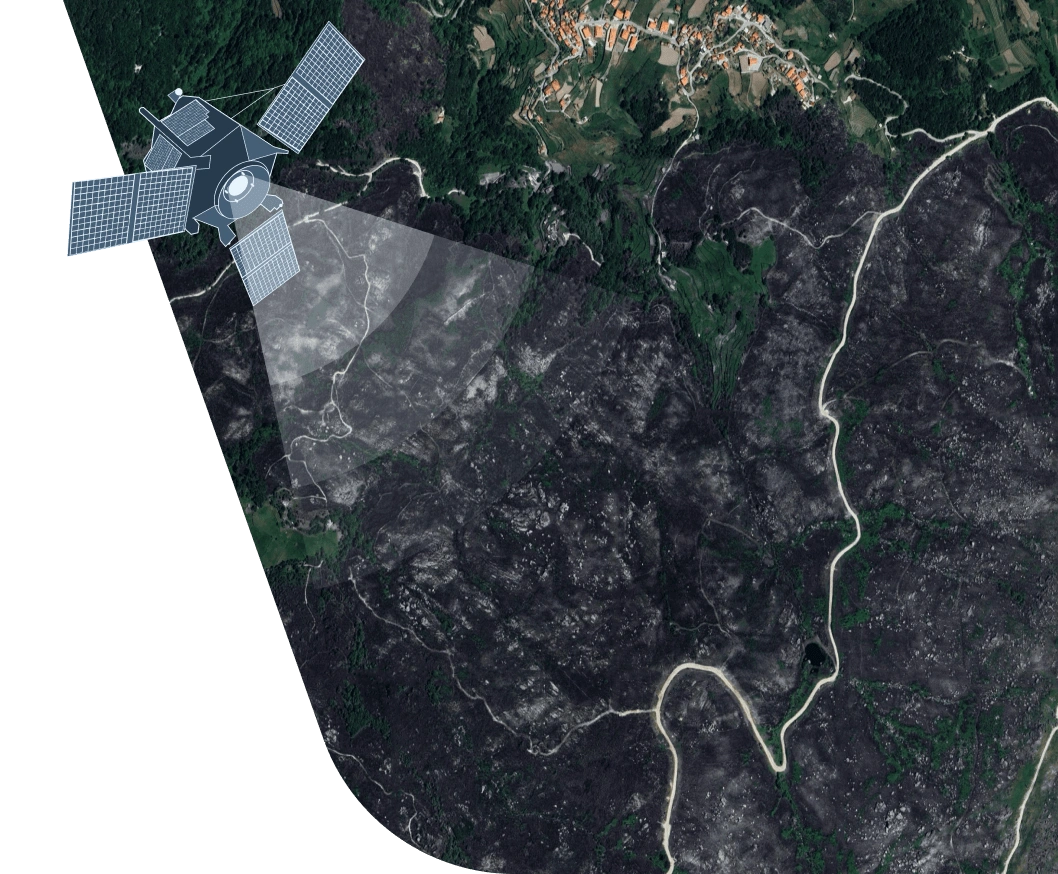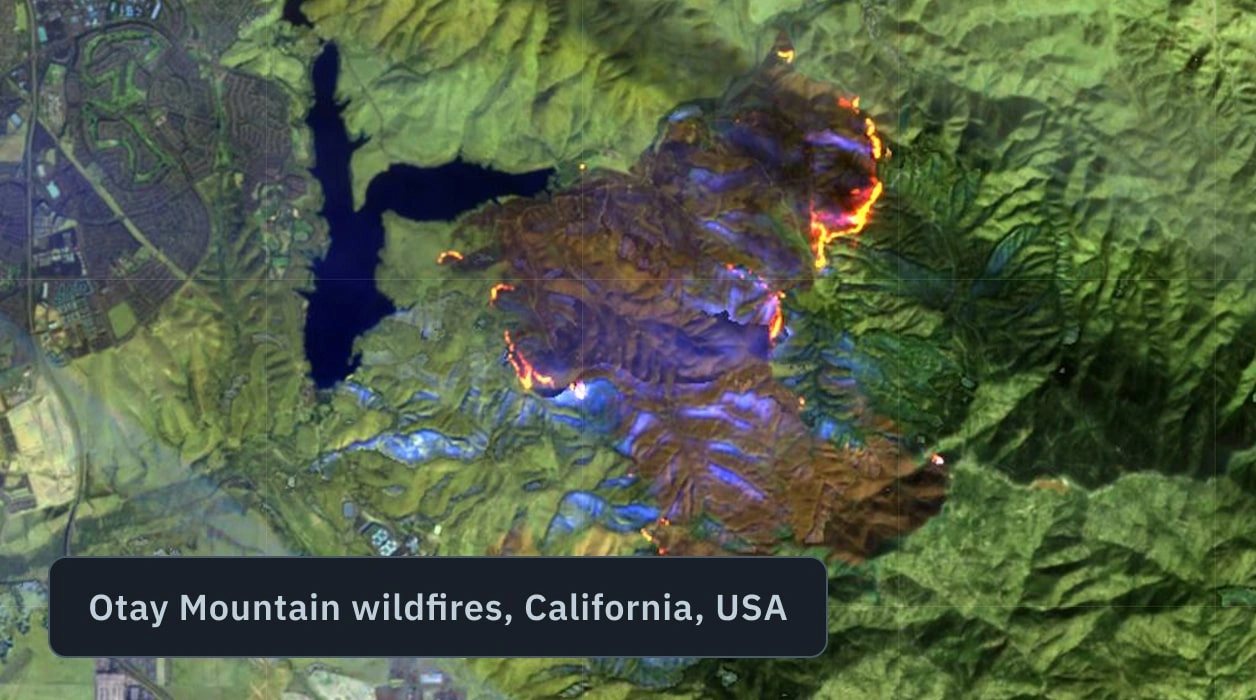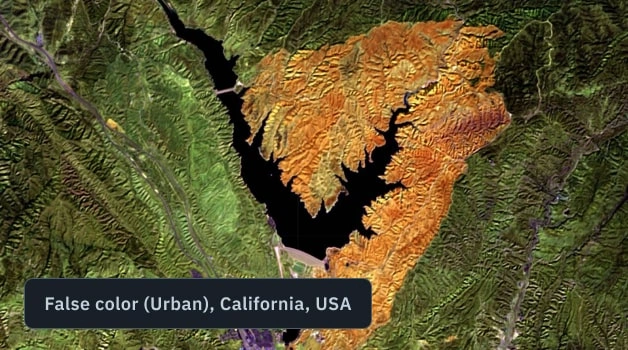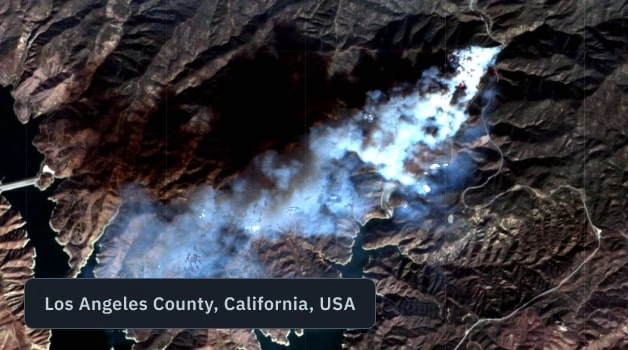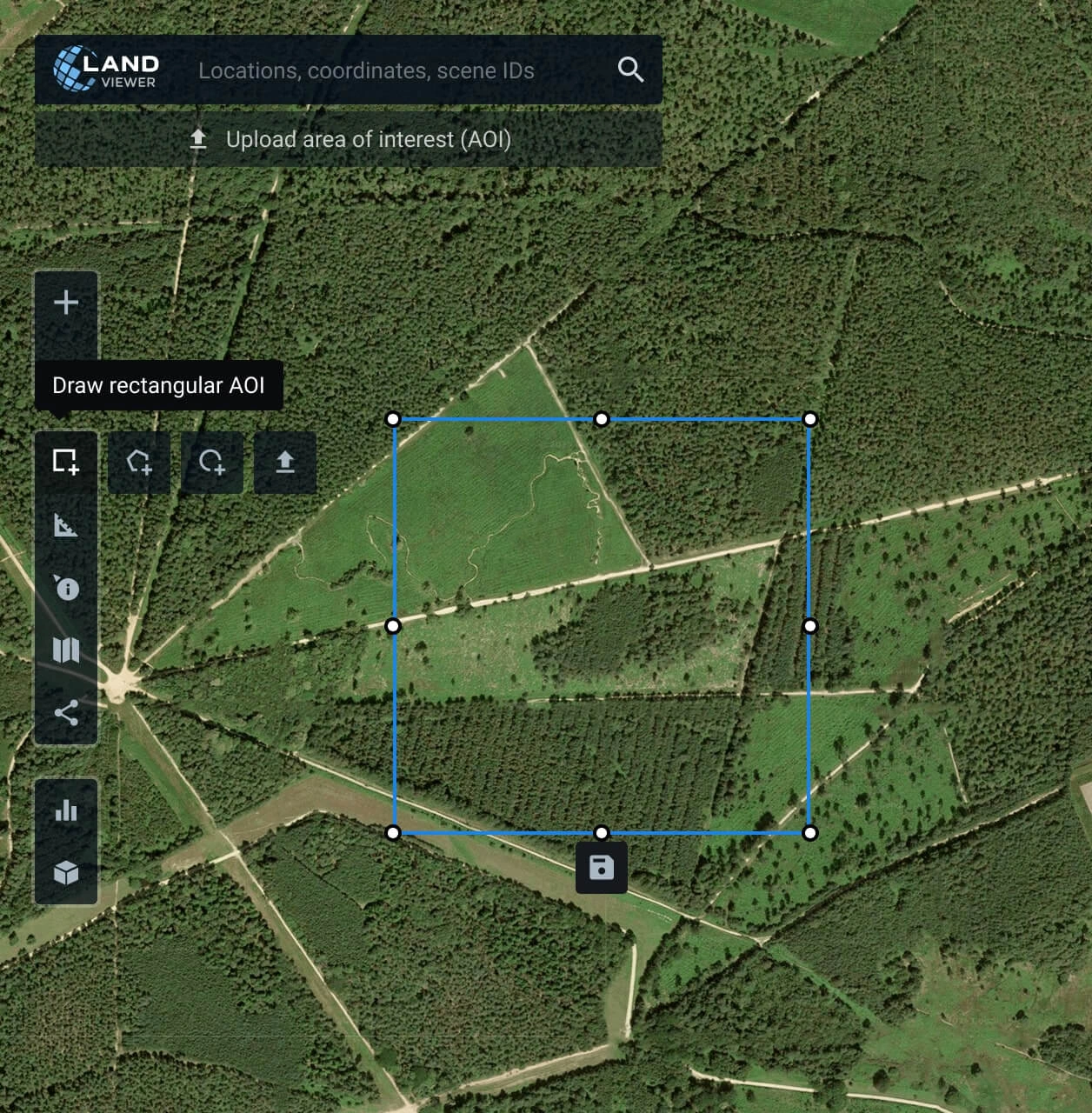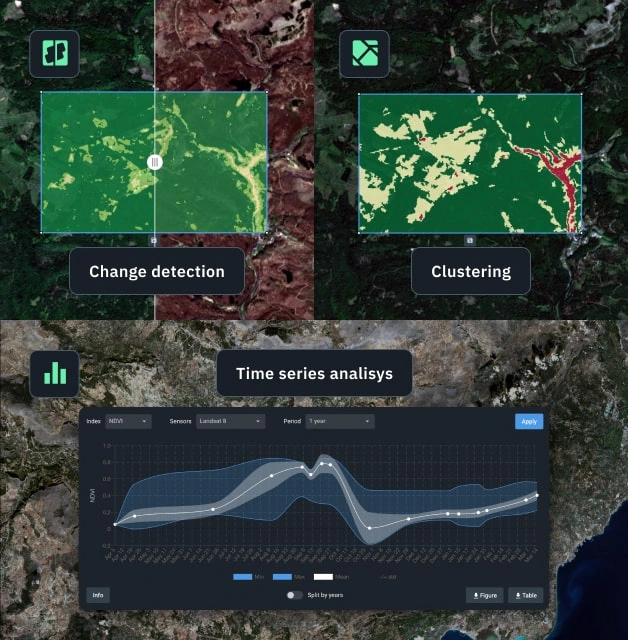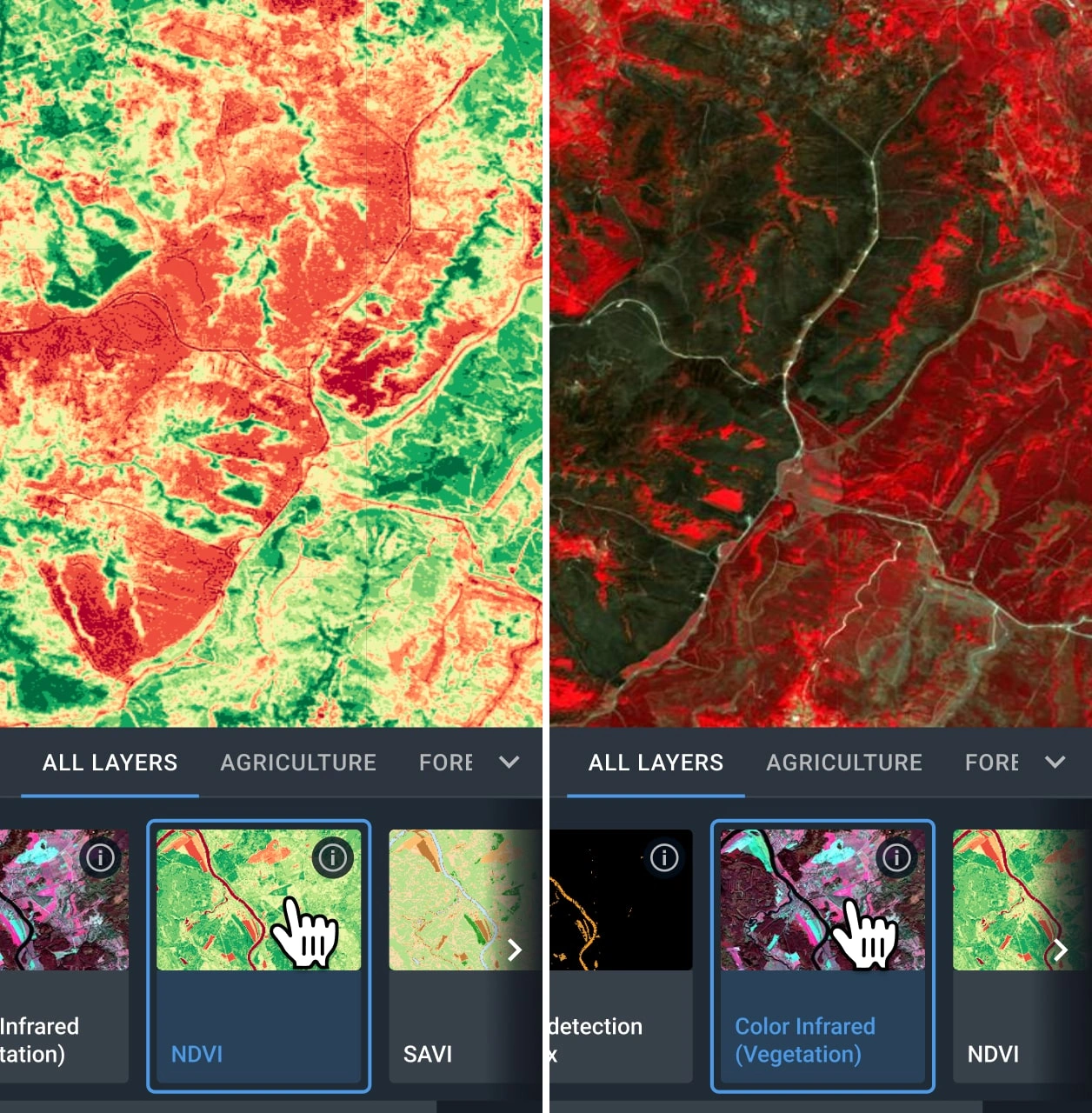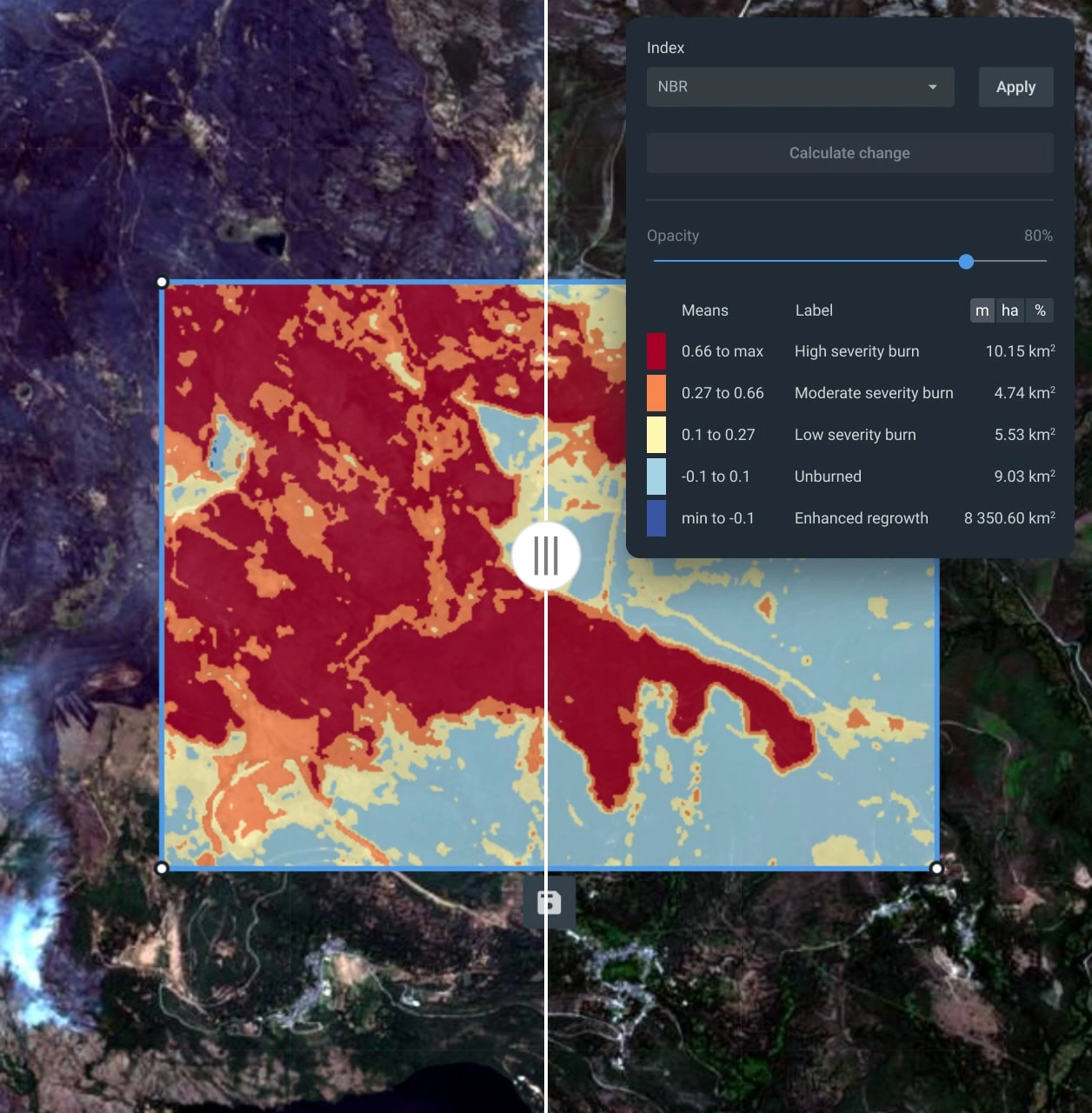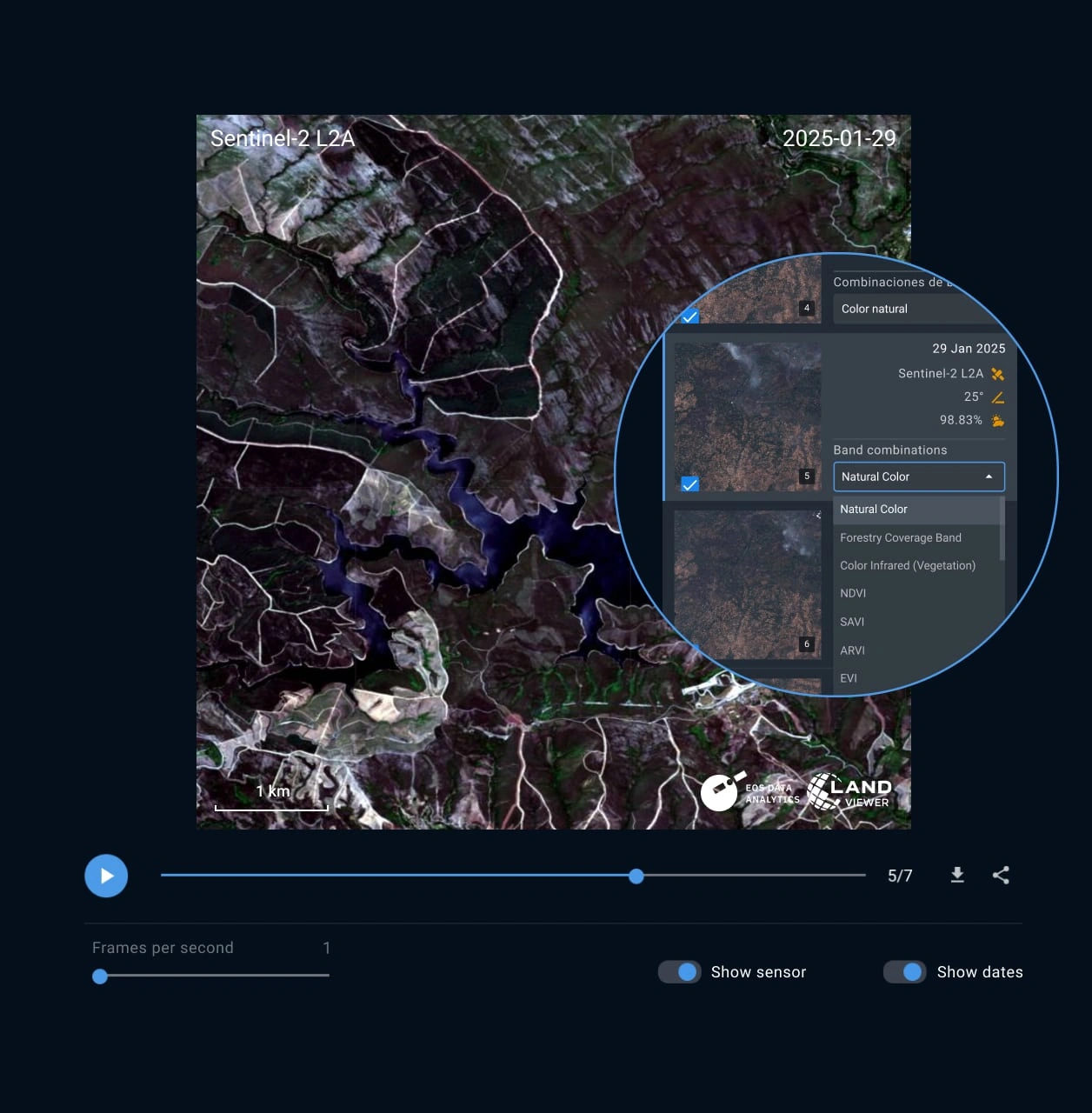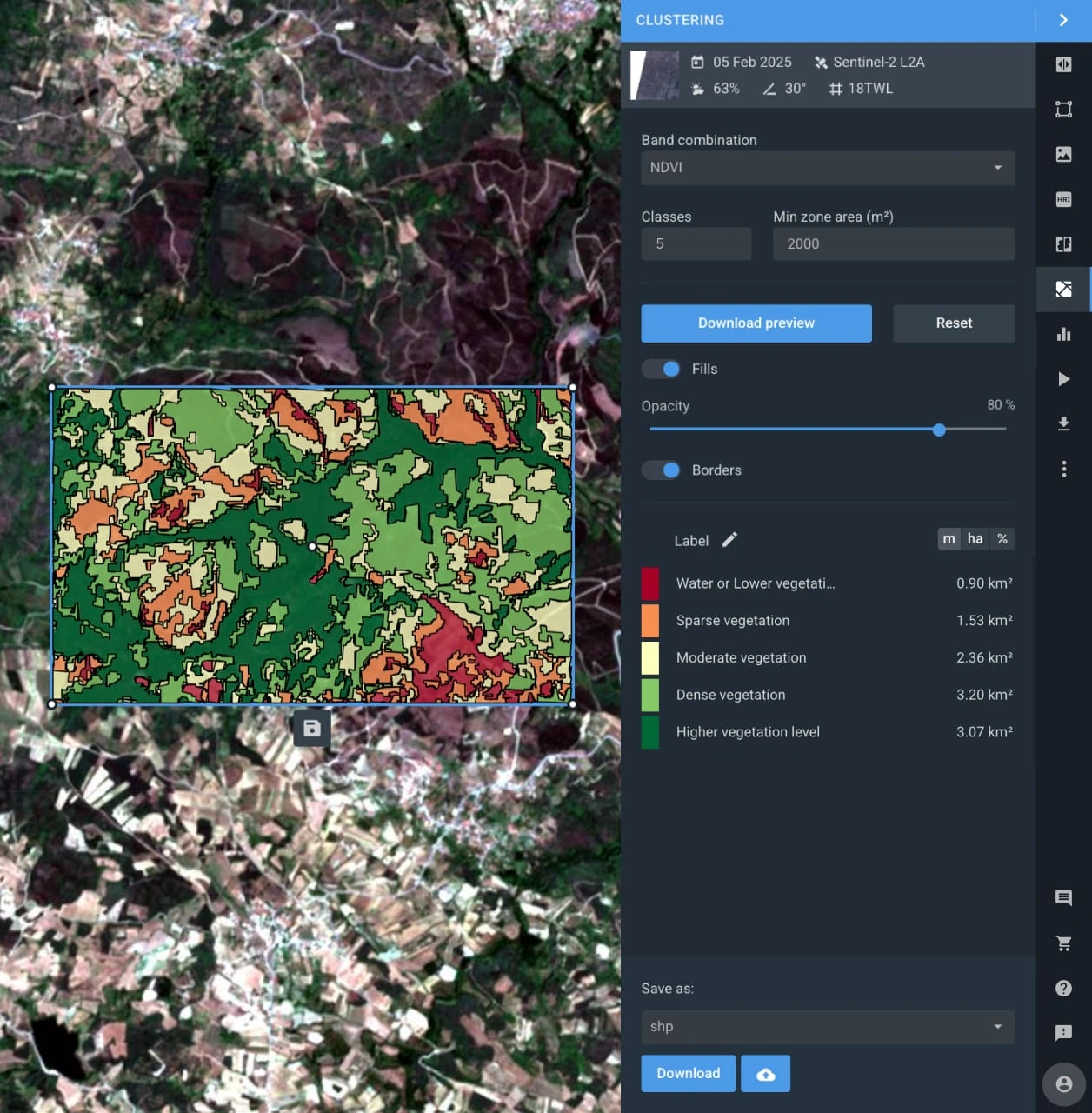Use over 20 pre-set indices, including NBR and NDMI, or create custom band combinations on EOSDA LandViewer to analyze forest health and wildfire conditions:
- NBR – maps burned areas and fire scars for post-fire assessment;
- Fire detection index – spots active wildfires or fire-prone areas when used with Change detection;
- NDMI – tracks vegetation moisture to detect stress and ignition risk;
- NDWI – highlights low water content, guiding forest fire prevention;
- NDVI – monitors sparse or stressed vegetation for wildfire preparedness;
- False-color band combination – visualizes burned vs. healthy areas for recovery planning.


